Weekly Seminar Series
Mondays, 4-5 p.m. | Health Sciences Learning Center
No Seminar March 25 – spring break
This is an accordion element with a series of buttons that open and close related content panels.
January 29 - Timothy P. Szczykutowicz, PhD | Clinical Medical Physics beyond scanner QA
Clinical Medical Physics beyond scanner QA
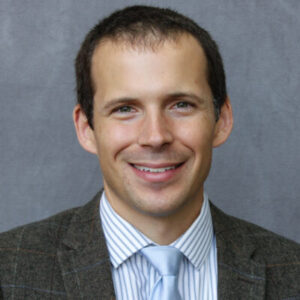 Tim P. Szczykutowicz, PhD
Tim P. Szczykutowicz, PhD
Associate Professor Departments of Radiology, Medical Physics, and Biomedical Engineering, University of Wisconsin-Madison
Are you uncertain about the future of diagnostic medical physics? I share this uncertainty and express skepticism regarding the sustainability of our field relying solely on government-regulated scanner quality assurance responsibilities for medical physicists. Furthermore, I observe that the ongoing AAPM Medical Physics 3.0 initiative is currently grappling with meeting genuine clinical needs. Similarly, our endeavors at Wisconsin sometimes face challenges in aligning with clinical requirements. The identification of projects that yield impactful changes to clinical workflow is nontrivial.
This presentation will delve into the research conducted at the University of Wisconsin-Madison, with a specific focus on clinical diagnostic medical physics. We will explore topics such as green radiology, patient throughput, examination quality, and protocol management and optimization. On the horizon is a forthcoming CMS quality measure set to take effect for the IQR (hospital inpatient quality reporting program), the OQR (hospital outpatient quality reporting program), and MIPS (physician reporting program). The metric embedded in this measure, developed at the University of Wisconsin, has the potential to serve as a mechanism for funding physicist time dedicated to quality projects beyond the traditional ‘scanner QA’ paradigm. We will examine what this CMS-motivated, quality-focused future could mean for our field.
Join from the meeting link
https://uwmadison.webex.com/uwmadison/j.php?MTID=m7a536c1cf5cfd29d52683fb146031bde
Join by meeting number
Meeting number (access code): 2631 169 3734
Meeting password: medphys (6337497 from phones)
Tap to join from a mobile device (attendees only)
+1-415-655-0001,,26311693734#6337497# US Toll
+1-312-535-8110,,26311693734#6337497# United States Toll (Chicago)
Some mobile devices may ask attendees to enter a numeric password.
Join by phone
+1-415-655-0001 US Toll
+1-312-535-8110 United States Toll (Chicago)
Global call-in numbers
February 5 - Michael Speidel, PhD and Paul Laeseke, MD, PhD | Research Partnerships in the Image-Guided Interventions Lab
Research Partnerships in the Image-Guided Interventions Lab
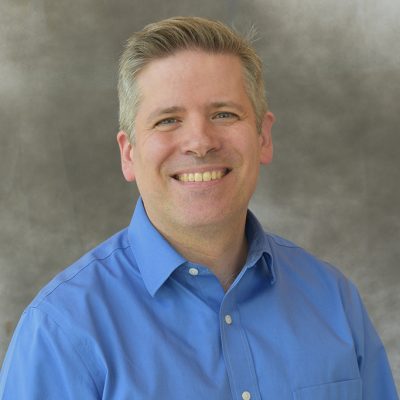
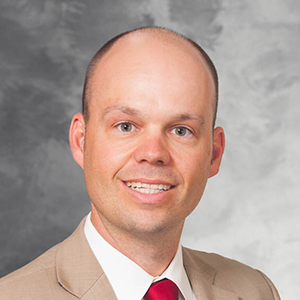
The Image-Guided Interventions Lab (IGIL) is dedicated to the development and clinical translation of novel imaging and therapy techniques for interventional procedures. This mission requires close collaboration of investigators in Radiology, Medical Physics, and industry partners, as well as a flexible approach to R&D. In this presentation, the Co-Directors of the IGIL will share examples of collaborative projects that have evolved into federal funding, sponsored research, clinical trials, and university resources. Dr. Paul Laeseke (Interventional Radiology) will present on the development of CBCT-guided histotripsy therapy for liver cancer, and Dr. Michael Speidel (Medical Physics) will discuss the evolution of quantitative DSA and dual-energy DSA on an interventional C-arm platform.
Join from the meeting link
https://uwmadison.webex.com/uwmadison/j.php?MTID=m7a536c1cf5cfd29d52683fb146031bde
Join by meeting number
Meeting number (access code): 2631 169 3734
Meeting password: medphys (6337497 from phones)
Tap to join from a mobile device (attendees only)
+1-415-655-0001,,26311693734#6337497# US Toll
+1-312-535-8110,,26311693734#6337497# United States Toll (Chicago)
Some mobile devices may ask attendees to enter a numeric password.
Join by phone
+1-415-655-0001 US Toll
+1-312-535-8110 United States Toll (Chicago)
Global call-in numbers
February 12 - Susanta Hui, PhD | Rediscovering the role of radiation in improving hematopoietic stem cell transplant outcomes for hematological diseases.
Rediscovering the Role of Radiation in improving hematopoietic stem cell transplant outcomes for hematological diseases.
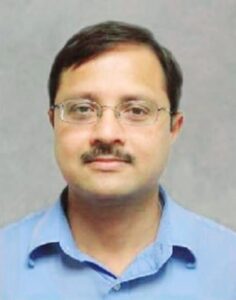 Susanta Hui, PhD
Susanta Hui, PhD
Professor
Beckman Research Institute, Department of Radiation Oncology, City of Hope National Medical Center
Allogeneic hematopoietic cell transplantation (HCT) for hematological diseases has made improvements, but the issue of relapse/graft failure, graft-versus-host disease (GVHD), and other transplant-related toxicities remains unresolved. Our objective is to explore the potential of precision radiation to address these challenges through comprehensive clinical and pre-clinical studies, along with a multidisciplinary approach. I will provide a brief overview of the advances made in total marrow irradiation (TMI) and imaging technologies that have supported ongoing clinical trials and their outcomes. We will explore the potential radiobiological consequences of dose-escalated TMI on the bone marrow environment, which can affect donor homing, engraftment, and disease relapse. The results of these correlative studies led to the creation of two new radio-immunotherapy strategies to manage leukemia relapse and GVHD. I will inform you of the latest development on TMI-based HCT that can offer sustainable cures for sickle cell disease and maintain fertility and other organ functions.
Join from the meeting link
https://uwmadison.webex.com/uwmadison/j.php?MTID=m90066f311bd7a20a3fac75426c306f3c
Join by meeting number
Meeting number (access code): 2632 767 0290
Meeting password: JaSPuJ6JD53 (52778565 from phones)
Tap to join from a mobile device (attendees only)
+1-415-655-0001,,26327670290#52778565# US Toll
+1-312-535-8110,,26327670290#52778565# United States Toll (Chicago)
Some mobile devices may ask attendees to enter a numeric password.
Join by phone
+1-415-655-0001 US Toll
+1-312-535-8110 United States Toll (Chicago)
Global call-in numbers
February 19 - Indra J. Das, PhD | Promises, Challenges, and Obstacles in MR-Linac
Promises, Challenges, and Obstacles in MR-Linac
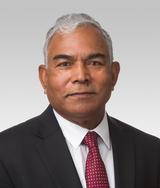
Indra J. Das, PhD
Director of Medical Physics, Professor & Vice Chair, Northwestern Memorial Hospital, Northwestern Feinberg School of Medicine, Chicago
Multi-modality imaging has become the backbone of modern radiation treatment. MRI is preferably used due to different types of image acquisitions providing superior soft tissue contrast and high resolutions images without radiation. To use these images in radiation treatment, image-fusion is required with limited success. Emergence of combined technology, MRI and linear accelerator on a single gantry called MR-Linac eliminates image fusion issues and provides simultaneous seamless imaging and treatment. It is a nascent high performing technology integrating MRI unit and a linear accelerator on a single gantry providing promises for better outcome in radiation oncology. This technology has opened the window of opportunity for adaptive therapy that can be adjusted during each session, accounting for any changes in tumor size, shape, or position and offers motion management for many diseases. Due to complexity of the system, it has many challenges and obstacles, some of them are technological (magnetic field, CT number, dose calculation, dose rate, etc), financial, throughput, and manpower training. Nevertheless MR-Linac has the potential to improve treatment outcomes, reduce side effects, and enhance patient care in the field of radiation oncology.
Join from the meeting link
https://uwmadison.webex.com/uwmadison/j.php?MTID=m90066f311bd7a20a3fac75426c306f3c
Join by meeting number
Meeting number (access code): 2632 767 0290
Meeting password: JaSPuJ6JD53 (52778565 from phones)
Tap to join from a mobile device (attendees only)
+1-415-655-0001,,26327670290#52778565# US Toll
+1-312-535-8110,,26327670290#52778565# United States Toll (Chicago)
Some mobile devices may ask attendees to enter a numeric password.
Join by phone
+1-415-655-0001 US Toll
+1-312-535-8110 United States Toll (Chicago)
Global call-in numbers
February 26 - Walter Block, PhD | MR Guided Neurosurgery: From Neuromodulation to Gene Therapy
MR Guided Neurosurgery: From Neuromodulation to Gene Therapy
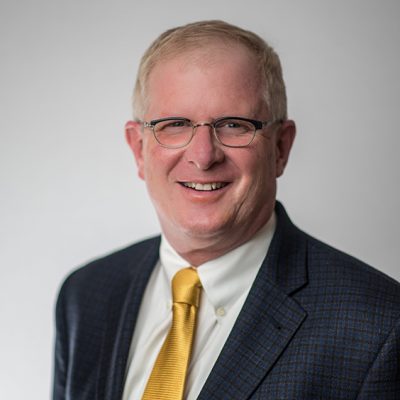
Walter Block, PhD
Professor, Medical Physics and Biomedical Engineering
University of Wisconsin–Madison
MRI has been touted for over 30 years as a transformative powerful means of guiding surgery but the field has grown relatively slowly. The field has made some significant advances over the last 10 years in neurosurgery. The MR scanner geometry aligns well with brain access and MRI has unique abilities to monitor therapy after minimally-invasive devices are introduced into the brain through small holes created in the skull.
This talk will feature contributions accomplished at UW-Madison in the acceleration and simplification of aligning devices for applications in neuromodulation, focal epilepsy treatment, bio-psychiatry, and stem cell therapy. The talk will close by describing an opportunity for UW–Madison to lead a coming push in the treatment of devastating pediatric neurodegenerative diseases through intraparenchymal gene delivery. A collaborative effort in areas of strength such as diffusion imaging and pediatric neurosurgery will be necessary to meet the challenge.
March 4 - Ryan Flynn, PhD | Re-inventing high-dose-rate brachytherapy around the ytterbium-169 isotope
Re-inventing high-dose-rate brachytherapy around the ytterbium-169 isotope
Ryan Flynn, PhD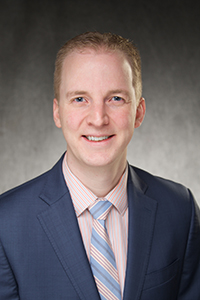
Medical Physics Division Director
University of Iowa
An approach for improving high-dose-rate brachytherapy treatments is to provide the capability for dynamic partial shielding within applicators. This can reduce the invasiveness of cervical cancer treatments by minimizing needle usage and improve urethral avoidance for prostate cancer patients. Such approaches would require an isotope with a lower average energy than conventional iridium-192. Ytterbium-169 is a promising isotope for this purpose, however, it is more expensive to produce than iridium-192 and has a shorter half-life, providing commercialization challenges. In this presentation an approach to cost-effectively producing and distributing ytterbium-169 will be discussed, along with technologies for physically delivering rotating shield brachytherapy for cervical cancer and prostate patients, and the simulated dosimetric benefits for patients.
March 11 - Matija Milanič, PhD | What light can tell us about blood vessels?
What light can tell us about blood vessels?
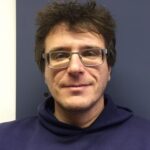 Matija Milanič, PhD
Matija Milanič, PhD
associate professor, senior researcher, coordinator of medical physics study program
Faculty of Mathematics and Physics, University of Ljubljana
Jozef Stefan Institute
Knowledge of tissue properties, such as cell arrangement, tissue oxygenation, and blood vessel density and geometry, is crucial for diagnosing and treating diseases like cancer and inflammation. I will briefly overview three optical imaging techniques, namely hyperspectral imaging (HSI), laser speckle contrast imaging (LSI), and optical coherence tomography angiography (OCTA), which are used to image tissue vascularization. These methods can reveal physiological and morphological information about the tissues, such as hemoglobin species, lipid and water distribution, and blood perfusion. We apply these methods to animal and human tumor and inflammation models and show how they can help us understand the role of blood vessels in disease and optimize the treatment.
March 18 - P. Jack Hoopes, DVM, PhD | Translational Flash Radiation: Pre-Clinical Models and Research Results

Translational Flash Radiation: Pre-Clinical Models and Research Results
P. Jack Hoopes, DVM, PhD
Professor of Radiation Oncology and Surgery
Greisel School of Medicine, Dartmouth
FLASH or Ultra High Dose Rate radiation is a new technique that delivers a dose of radiation to a tumor target up to 5000 times faster than occurs in conventional radiation therapy. Until recently, the scarcity of UHDR/FLASH irradiators, meant much of the FLASH research was physics, engineering and modeling based. However, a growing number of in vivo studies have now shown potentially important tissue effect differences following FLASH and conventional radiation, at the same doses and treatment parameters. Important there does not appear a significant difference in tumor control between FLASH and Conventional radiation, at comparable doses. Although the role of oxygen remains at the FLASH RT forefront, mechanistic detail is unclear. Currently most of the in vivo FLASH studies have been conducted in rodents (brain, intestine, lung, and skin), although large animal studies are now merging. Some FLASH-based studies have shown normal tissue damage reduction in the 10-20% range.
Tissue type, alpha/beta ratio, total dose, post -irradiation interval and beam structure remain significant unknown factors in optimization of the FLASH effect damage reduction. However, there are two major issues that provide the greatest challenge to the FLASH effect hypothesis: lack of a logical, scientific and repeatable mechanism, and the lack of detailed rodent and large animal studies that include morphologic damage complexity, variability, and late effect situations. Current Dartmouth studies comparing FLASH and Conventional RT are focused on these parameters and oxygen-based mechanisms in rodent, porcine and clinical canine/feline tumor/normal tissue models. These studies and results will be discussed.
April 1 - Marie Muller, PhD | Quantitative ultrasound in complex tissues: finding new sources of contrast
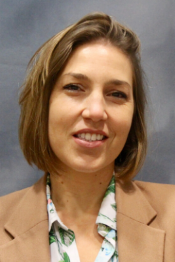
Quantitative ultrasound in complex tissues: finding new sources of contrast
Marie Muller, PhD
Associate Professor, Mechanical and Aerospace Engineering
NC State University
Highly heterogeneous tissues such as lungs or bone break the fundamental assumptions at the basis of conventional ultrasound imaging. Ultrasound signals that propagate in such media are too complex to form conventional images. However, this complexity is also a very rich source of information, since complex acoustic signatures are packed with information on tissue structure.
Our objective is to extract quantitative information on tissue microstructure, by applying physics-based models of ultrasound scattering. We demonstrate that such approaches can be applied to the characterization and staging of lung diseases such as pulmonary fibrosis and edema, or of bone diseases such as osteoporosis. These chronic diseases require frequent monitoring. Developing non-invasive, non-ionizing and quantitative methods to evaluate the progression of such diseases is therefore critical.
We also show that novel imaging methods for lung cancer using multiple scattering as a source of contrast holds great promise for the real-time guiding of lung cancer surgery.
April 8 - Jennifer Smilowitz, PhD | Radiation Oncology at the Madison VA
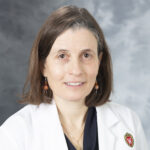
Radiation Oncology at the Madison VA
Jennifer Smilowitz, PhD
Chief Medical Physicist, William S. Middleton Memorial Veterans’ Hospital
Clinical Professor, Departments of Human Oncology and Medical Physics
University of Wisconsin-Madison
The Veterans Health Administration is the largest integrated health care system in the US, serving > 9M Veterans annually. The William S Middleton VA Hospital (“The Madison VA”) is the 41st (and most recently commissioned) radiation oncology department in the system. Like almost half the radiation oncology departments, the medical physicists are contracted through a university affiliate.
I will speak about my experiences as UW Faculty serving as the Chief Medical Physicist at the Madison VA. This has been rewarding experience with many similarities and differences with respect to the last 18 years of practice solely within the UW system. We have been treating Veterans since August 2022 with state-of-the-art external beam radiation oncology modalities such as stereotactic body radiotherapy and breathhold gated treatments. Our linear accelerator is beam matched to those at UW, and we have been able to leverage our affiliation with UWHC (physicists and physicians) to provide highly technical radiation therapy at the Madison VA. We have tremendous support from the local VA and the National Radiation Oncology Program (NROP.) In addition to our strong partnership with UWHC, we align our clinical, safety and research practices with NROP to provide a cohesive radiation oncology service to all Veterans. Being aligned with both the UW and NROP provides many opportunities and challenges. One example is the volume of Veterans treated presents a unique position to engage in clinical trials, both within and external to the VA systems.
April 15 - Denis Bergeron, PhD | Realization and dissemination of activity standards for medically important alpha emitters
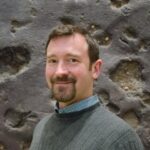
Realization and dissemination of activity standards for medically important alpha emitters
Denis Bergeron, PhD
Research Chemist
National Institute of Standards and Technology (NIST)
Targeted alpha therapy (TAT) promises a path to effective treatment of cancers with reduced impact to healthy tissue. There is growing recognition that precise, patient-specific dosimetry will be key to realizing the full potential of TAT. In any radiopharmaceutical therapy, the critical input for absorbed dose estimates is the administered activity. Whether for a therapeutic agent or a complementary molecular imaging agent, we want to administer enough activity to do the job, but no more. The SI derived unit for activity is the becquerel (Bq), and it is the responsibility of metrology institutes like NIST to realize the unit and provide the measurement infrastructure to support its dissemination to end users. This talk will introduce the concepts behind NIST standards for activity and how traceability to those standards is established.
April 22 - Ke Sheng, PhD | Unlimiting Medical Physics Research in Radiation Oncology
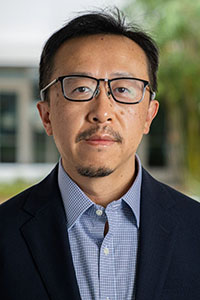 Unlimiting Medical Physics Research in Radiation Oncology
Unlimiting Medical Physics Research in Radiation Oncology
Ke Sheng, PhD
Professor and Vice Chair of Medical Physics
University of California, San Francisco
Therapeutic medical physics research has traditionally served the purpose of radiation oncology clinical needs, which have motivated groundbreaking inventions such as IMRT and IGRT. The model, however, has been increasingly challenged when the clinical needs provide insufficient or unclear guidance, leading to stagnant physics research. The presentation will focus on new avenues of physics research based on the broad definition of X-ray physics and physical modeling of the tissues as a means to unlimiting medical physics research. The presentation will demonstrate examples of research not driven by immediate clinical needs but by the theoretical potential of first principles that define physics.
April 29 - Lonie Salkowski, MD, PhD | Trials and tribulations of implementing interpretive skills simulation system for resident breast imaging education
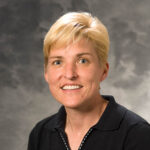 Trials and tribulations of implementing interpretive skills simulation system for resident breast imaging education
Trials and tribulations of implementing interpretive skills simulation system for resident breast imaging education
Lonie Salkowski, MD, PhD
Professor, Department of Radiology
University of Wisconsin–Madison
Residents have only twelve weeks of breast imaging to become proficient in all modalities and skills. There is no cross training in other rotations nor call experience to support their knowledge development in breast imaging. There is a need for effective methods to enhance trainee interpretive skills in breast imaging. This study explored the feasibility and challenges associated with the implementation of an interpretive skills simulation system for breast imaging into residency education.